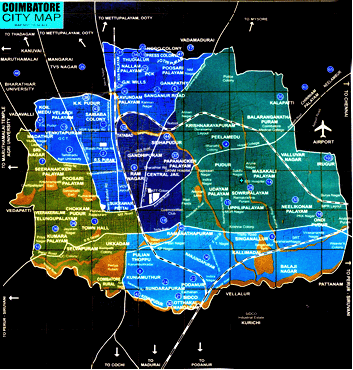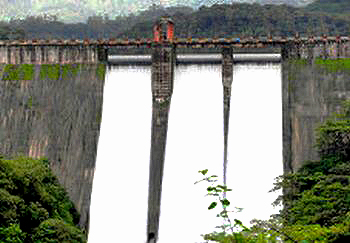A Trip down memory lane
Originally Coimbatore district formed part of the Kongu country, the history of which dates back to the Sangam age. It is found that in early days the area was inhabited by the tribes, the most predominant among them being the Kosars who are reported to have had their headquaeters at Kosampathur which probably later became the present Coimbatore.
However, tribal predominance did not last long as they were over-run by the Rashtra Kutas. From Rastrakutas the Region fell in to the hands of the cholas who were in prominence at the time of Raja Raja Chola. On the decline of Cholas the Kongun territory was occupied by the Chalukyas and then by the Pandyas and the cysalas.
Due to internal strife in the Pandyas Kingdom the Muslim rulers from Delhi happened to interfere. Thus the area fell into the hands of Madurai Sultanate from whom the Vijayanagar rulers wrestled for the region during 1377-78 after overthrowing the Madurai Nayaks.During the period of Muthu Veerappa Nayak and later during the period of Tirumal Nayak internal strife and intermittent wars ruined the kingdom.
As a consequence during the period of Tirumal Nayak,the Kongu region fell into the hands of the Mysore rulers from whom hyder Ali took over the area. However, consequents on the fall of Tippu Sultan of Mysore in 1799, the Kongu region came to be ceded to the East India Company by the Maharaja of mysore who was restored to power by the East India Company after defeating Tippu Sultan. From then till 1947 when India attained Independence, the region remained under British control who initiated systematic revenue administration.
 |
In 1840, the areas were merged into one and brought under one District Collector. During the time, Mr.H.S. GREAME, [I/C] from 20/10/1803 to 20/01/1805 was the Collector. In 1868, the Nilgiris District was bifurcated from the Coimbatore District. At the opening of the present century there were ten taluks in the district viz., Bhavani, Coimbatore, Dharapuram, Erode, Karur, Kollegal, Palladam, Pollachi, Sathyamangalam and Udumalaipettai. The name of Sathyamangalam taluk was subsequently changed as Gopichettipalaiyam. Avinashi taluk was formed in the year Karur taluk happened to be transferred to Tiruchirappalli district. In 1927, some villages of Bhavani taluk together with a few village from Salem district were constituted into Mettur Area but very soon i.e, in 1929, this area was transferred to Salem district. Again in the year 1956 considerable area of the district, viz., the whole of Kollegal taluk was transferred to Mysore State as part of the States Re-organisation Scheme. In 1975, Sathyamangalam sub-taluk was upgraded as a full fledged taluk. |
Under G.O. Ms. No. 1917 Revenue dt. 31-8-79, the following six taluks were bifurcated from then Coimbatore district to from Erode district. Bhavani, Gopichettipalayam, Sathyamangalam, Erode, Perundurai and Dharapuram. This bifurcation considerably reduced the size of the district. It has only nine taluks now, viz. Pollachi, Coimbatore (North), Avanashi, Palladam, Udumalpettai, Tirupur, Valparai, Coimbatore (South) and Mettupalayam.
